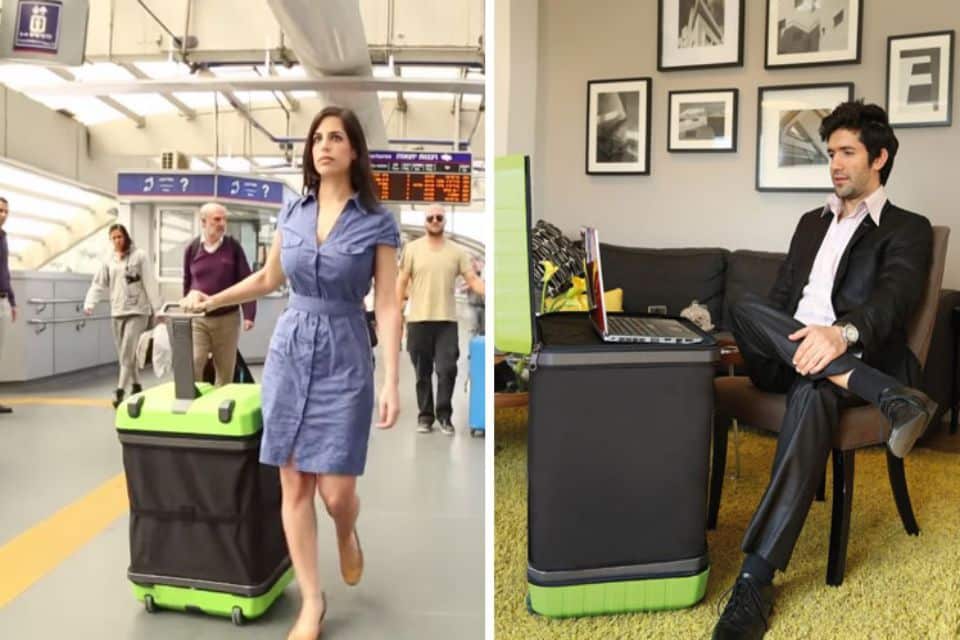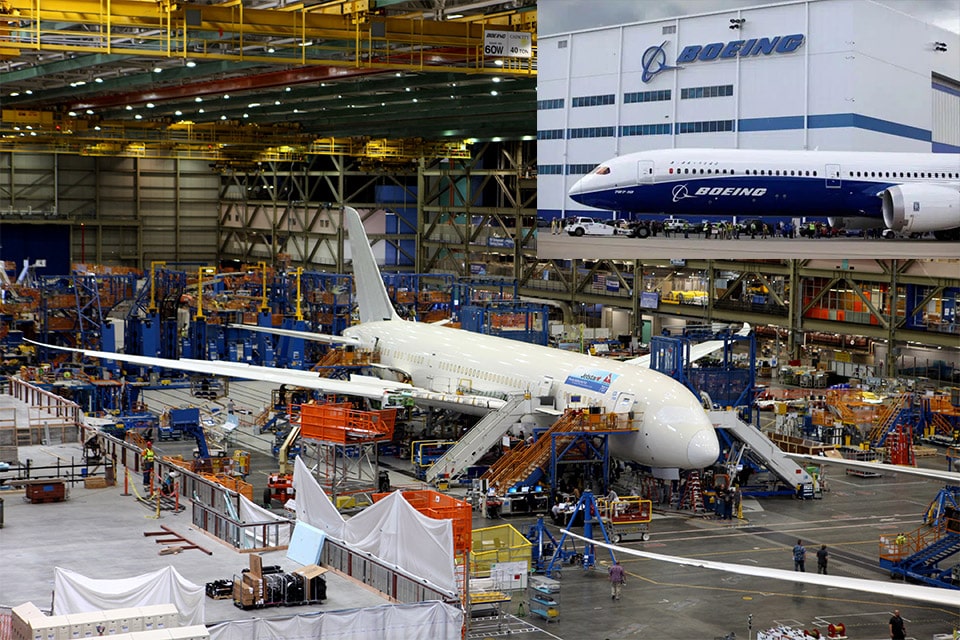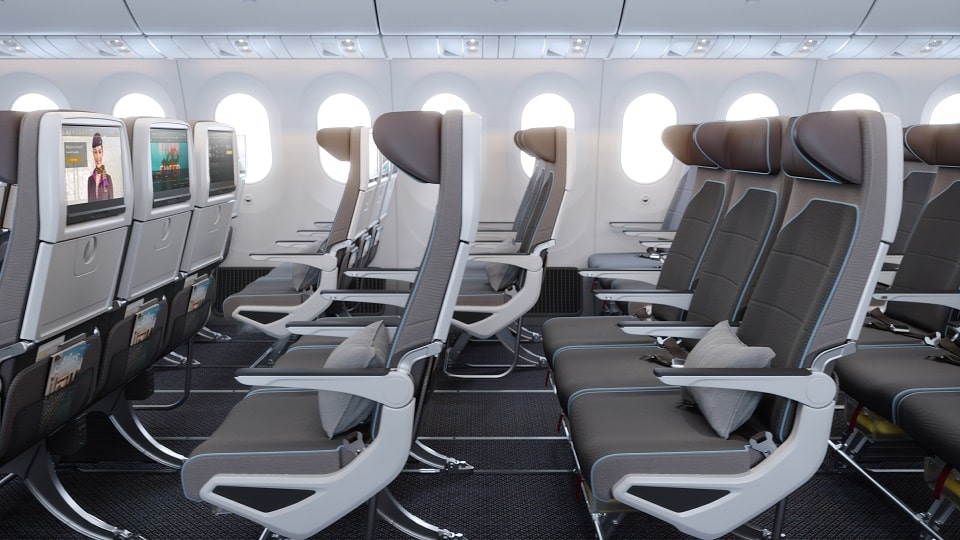Aviation
Hawaiian, Cathay Pacific and Cathay Dragon Airline to introduce new ‘smart bag’ policy

Cathay Pacific :
Effective 1 January 2018, smart bags with non-removable lithium batteries will not be accepted as
cabin or checked baggage
Cathay Pacific and Cathay Dragon will be introducing new policies surrounding the carriage of ‘smart bags’, which are a new type of innovative luggage featuring integrated lithium batteries for the purpose of charging an external device or to provide power to the wheels of the bag.
Smart bags will not be considered a portable electronic device (PED); their batteries will be handled as a power bank or spare lithium battery. The new policy follows industry guidance recently issued by the International Air Transport Association (IATA) and aligns with similar practices adopted by major airlines worldwide for safety management and risk mitigation.
Checked baggage
Effective 1 January 2018, customers who travel with a smart bag must be able to
remove the battery in case the bag has to be checked-in at any point during the
customer’s journey. The passenger must carry the removed lithium battery in their
cabin baggage and it will be treated in accordance with existing spare lithium battery
requirements.

Cabin baggage
If the customer would like to take the smart bag as cabin baggage, the battery must
be removable and should remain installed inside the bag.
If the battery cannot be removed, the bag will not be permitted for carriage as
checked or cabin baggage.
Our Airport teams will be happy to assist customers with any queries they may have
concerning smart bags.
Hawaiian Airlines
– Hawaiian Airlines today announced it will no longer accept smart bags containing non-removable
lithium ion batteries as checked or carry-on luggage beginning Jan. 15. These batteries have been known to short-
circuit, posing a safety risk for airlines.
Smart bags featuring removable batteries may be carried on and stored in the overhead bin as long as they remain
turned off for the duration of the flight in accordance with Federal Aviation Administration (FAA) Regulations regardinglithium ion batteries. Passengers may check a smart bag if its battery has been removed. The detached battery, which must be carried in the cabin, will need to have its terminals isolated to prevent a short circuit.

According to the International Air Transport Association (IATA), a smart bag may include features such as:
• Lithium ion battery and motor allowing it to be used as a personal transportation device, either as a stand-up
scooter, or sit on vehicle. These devices do not meet the criteria of a mobility device.
• Lithium ion battery power bank that allows charging of other electronic devices such as mobile phones,
tablets and laptops.

• GPS tracking devices with or without GSM capability.
• Bluetooth, Radio-Frequency Identification (RFID) and Wi-Fi capability.
• Electronic baggage tags.
• Electronic lock(s).
• Lithium ion battery, motor and tracking device (GPS) allowing the bag to self-propel and ‘follow’ the owner.

Aviation
FAA rolling out new technology at four US airports

The Federal Aviation Administration (FAA) is set to debut cutting-edge airfield surveillance systems at four prominent airports across the United States.
Austin-Bergstrom, Indianapolis, Nashville, and Dallas Love Field will spearhead the implementation of the Surface Awareness Initiative (SAI) by July 2024, marking a significant stride in runway safety enhancement efforts.
SAI revolutionizes air traffic controllers’ situational awareness by leveraging Automatic Dependent Surveillance – Broadcast (ADS-B) data. Through this innovative technology, controllers gain real-time and precise depictions of aircraft and vehicles navigating the entire airfield, irrespective of weather conditions.
Icons representing aircraft and ADS-B-equipped vehicles will populate an airport map, offering comprehensive coverage of runways, taxiways, hold ramps, and other critical areas.
This initiative is a pivotal component of the FAA’s accelerated surface safety portfolio, complementing other vital tools like Approach Runway Verification (ARV) and the Runway Incursion Device (RID). The proactive deployment of these technologies underscores the FAA’s unwavering commitment to fortifying runway safety and averting potentially hazardous incidents.
Beyond technological advancements, the FAA is taking multifaceted measures to bolster safety across the national airspace system. Initiatives include aggressive air traffic controller recruitment drives, enhancements to the Air Traffic-Collegiate Training Initiative, and the deployment of upgraded tower simulator systems in numerous facilities nationwide by the end of 2025.
Additionally, the FAA is fostering collaborative efforts through regular runway safety action team meetings and investing substantially in runway lighting and surface improvements at airports of varying sizes.
Aviation
Boeing says 787 Dreamliner aircraft is safe

Boeing is standing firm on the safety and durability of its 787 Dreamliner aircraft despite mounting criticism and whistleblower allegations.
In response to concerns raised by whistleblowers and ahead of a congressional hearing, the aviation giant emphasized its rigorous testing protocols and asserted confidence in the integrity of its planes.
During a media briefing accompanied by a PowerPoint presentation, boeing aircraft
reiterated its confidence in the safety of both the 787 and 777 aircraft models. Senior engineers showcased extensive testing procedures aimed at refuting claims that approximately 1,400 Boeing planes may be afflicted by significant safety issues. The company addressed specific allegations, including concerns about gaps in manufacturing processes that could lead to premature fatigue failure over time.
The upcoming Senate hearing is expected to feature testimony from Boeing engineer Sam Salehpour, who has publicly criticized boeing airplanes safety practices and alleged retaliation for speaking out. Salehpour’s claims, currently under investigation by the FAA, include allegations of workers resorting to extreme measures during assembly, such as “jumping on pieces of the airplane” to align them.
Boeing officials stressed that thorough inspections of nearly 700 in-service Dreamliner jets revealed zero airframe fatigue findings, even after six and twelve years of heavy maintenance inspections. These results have been shared with the FAA, according to Boeing’s chief engineer, Steve Chisholm. He emphasized that the materials used in the construction of the 787 were specifically chosen for their resistance to fatigue and corrosion.
In response to Salehpour’s accusations of shortcuts in assembly processes, boeing planes
acknowledged instances where shims were not of the proper size and where areas did not meet skin-flatness specifications. However, the company dismissed claims of excessive force during assembly, stating that such practices were not part of their standard procedures.
Aviation
How to Utilize American AAdvantage Miles for Etihad Flights

Are you eager to make the most of your American AAdvantage miles by exploring exotic destinations served by Etihad Airways? Look no further! This guide will walk you through the process of redeeming your AAdvantage miles for Etihad flights, ensuring you unlock the full potential of your rewards.
Etihad Airways’ partnership with American Airlines opens up a world of possibilities, allowing travelers to access a wider range of destinations and flight choices. jetnet american airlines What’s more, passengers can earn AAdvantage miles for their Etihad flights, enhancing the value of their travel experiences.
To start earning Etihad Guest miles, one convenient option is through credit card rewards. While Etihad doesn’t offer a U.S.-based cobranded credit card, you can seamlessly transfer rewards from renowned programs like American Express Membership Rewards, Capital One, and Citi ThankYou Rewards at a 1:1 ratio.
Once you’ve accumulated your miles, it’s time to embark on your Etihad journey. But how do you ensure your flights are credited to your American AAdvantage account? concierge key american airlines Fear not, for the process is simple. After your Etihad flights, wait at least three days before requesting to add them to your AAdvantage account. Utilize the provided form, entering your AAdvantage number and the 13-digit ticket number. Additional information may be required, readily available on your boarding pass stub or ticket receipt.
Etihad Airways boasts an extensive network, particularly in North America, with flights to major cities including Boston, Chicago, New York, Toronto, and Washington. Whether your wanderlust leads you to the Maldives, India, Sri Lanka, or South Africa, Etihad can serve as your gateway to these captivating destinations.
Now, let’s talk redemption. If you’re eyeing the dream of using your AAdvantage miles for etihad airport, rest assured, the process aligns with the standard AAdvantage partner award chart. To provide clarity, consider these examples of one-way business aa pricing:
- From the United States to the Middle East and India for 70,000 miles
- Venture from the United States to Africa for 75,000 miles
For those seeking the epitome of luxury in first class
- Luxuriate in a flight from Abu Dhabi to London for 62,500 miles
- Indulge in a journey from Abu Dhabi to New York for 115,000 miles
With these redemption options, your AAdvantage miles can transform into unforgettable travel experiences aboard Etihad Airways.



























